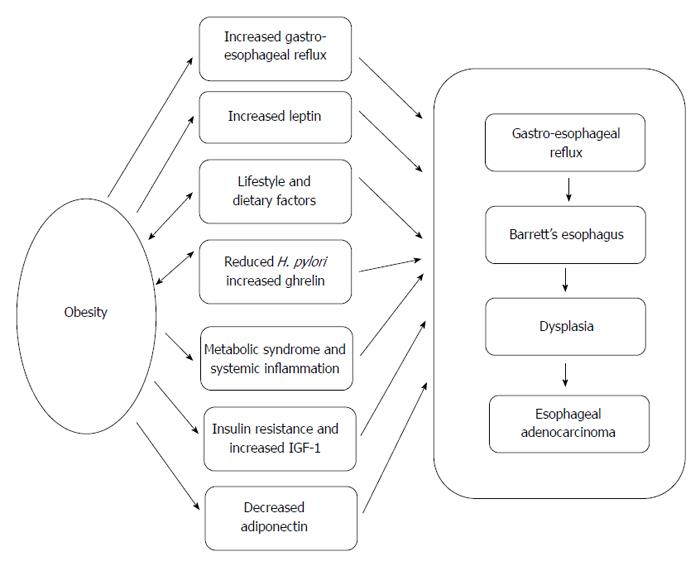Copyright
©2014 Baishideng Publishing Group Inc.
World J Gastrointest Pathophysiol. Nov 15, 2014; 5(4): 534-549
Published online Nov 15, 2014. doi: 10.4291/wjgp.v5.i4.534
Published online Nov 15, 2014. doi: 10.4291/wjgp.v5.i4.534
Figure 1 Possible mechanisms linking obesity with the development of esophageal adenocarcinoma.
There are several potential and not mutually exclusive mechanisms that could link obesity and esophageal adenocarcinoma. Adipose tissue can exert both mechanical and endocrine effects that could enhance gastro-esophageal reflux and progression to adenocarcinoma. Decreased H. pylori could promote both gastro-esophageal reflux by increasing gastric acidity and increase body mass by enhancing production of the gastric appetite-stimulating peptide ghrelin.
Figure 2 Effects of the adipokines leptin and adiponectin on Barrett’s esophagus and esophageal adenocarcinoma.
Obesity, more specifically visceral obesity, is associated with increased serum leptin and decreased serum adiponectin levels. Leptin and adiponectin have a set of antagonistic pathophysiological actions on Barrett’s esophageal and adenocarcinoma cells.
- Citation: Alexandre L, Long E, Beales IL. Pathophysiological mechanisms linking obesity and esophageal adenocarcinoma. World J Gastrointest Pathophysiol 2014; 5(4): 534-549
- URL: https://www.wjgnet.com/2150-5330/full/v5/i4/534.htm
- DOI: https://dx.doi.org/10.4291/wjgp.v5.i4.534










